Yesterday I finished my fifth reading journal, and so I thought that it would be a good opportunity to write a post about how I set up my reading journal.
I use my reading journal to keep track of what I read and to encourage me to read more. This is the journal that I’ve just finished, a Moleskine Two-Go:
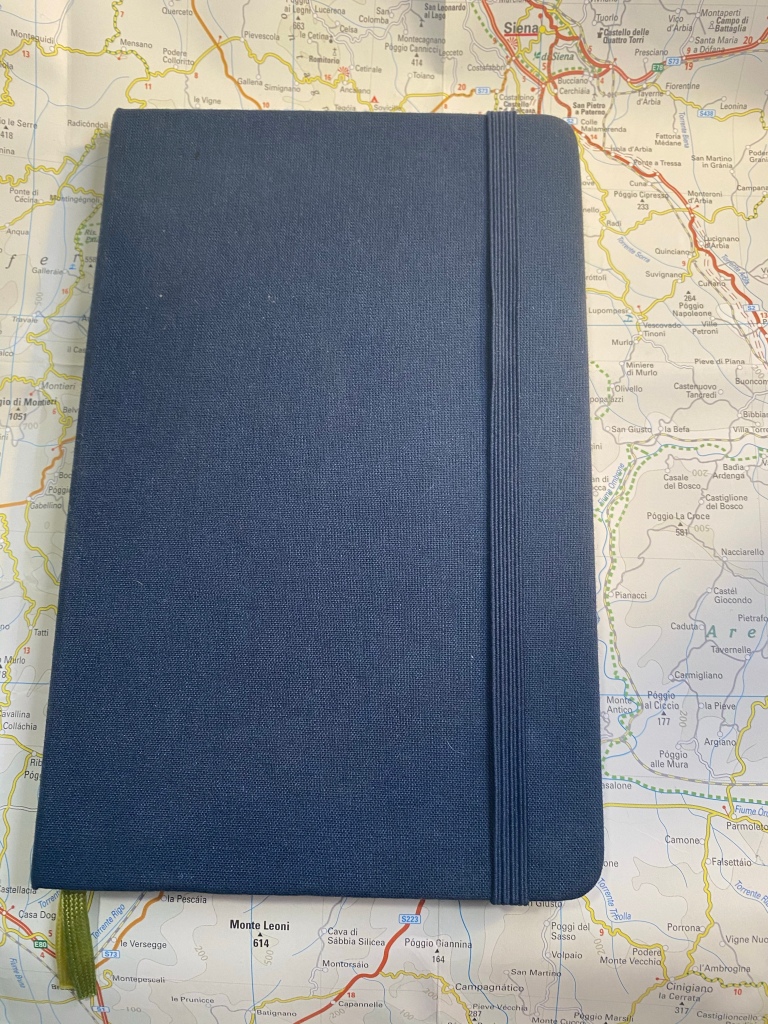
I used to use a Field Notes Arts and Sciences notebook for my reading journal, but once I got back to reading more it made sense to move to a larger journal. For the past three years I’ve used the Moleskine Two-Go, and I fill one book journal a year (70 books are logged in each notebook).
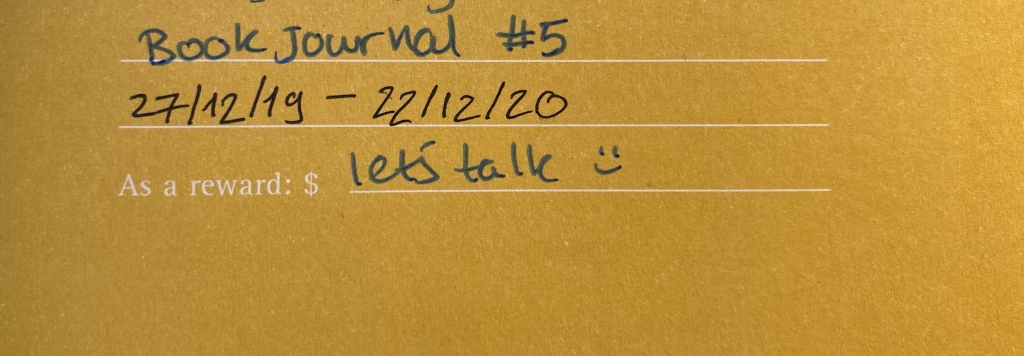
This is the setup in my old reading journal. Three pages of index:
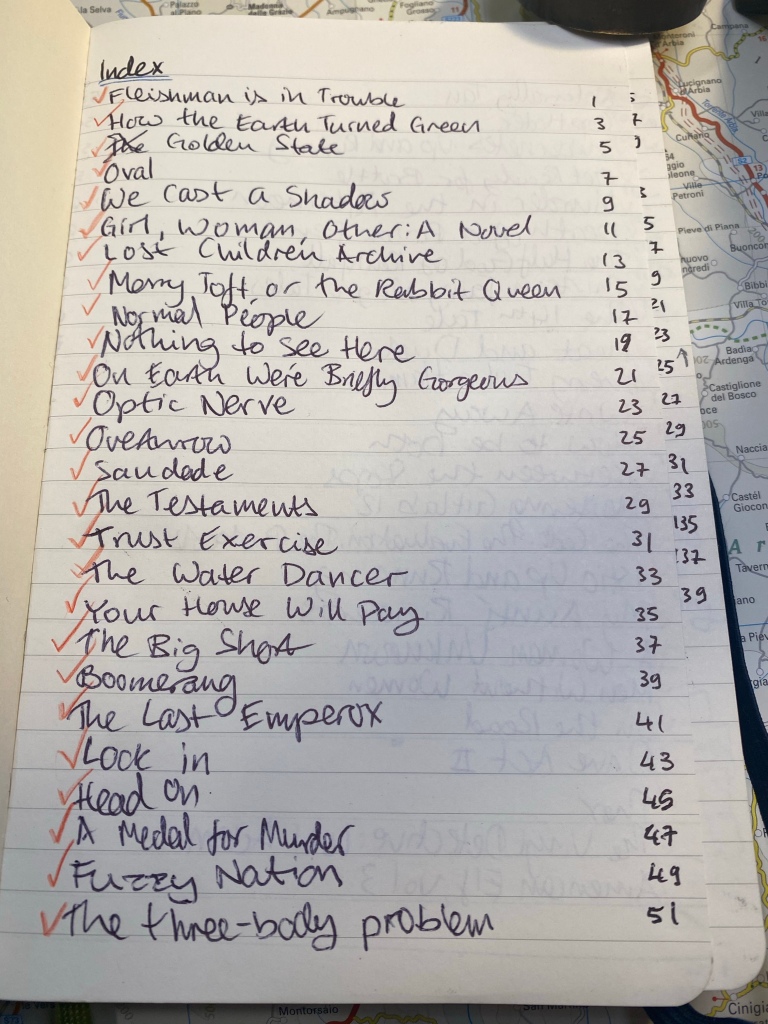
The Moleskine Two-Go comes with pages that are blank on one side and lined on another, which is perfect for my use case, except for the second index page, which I need to rule myself:
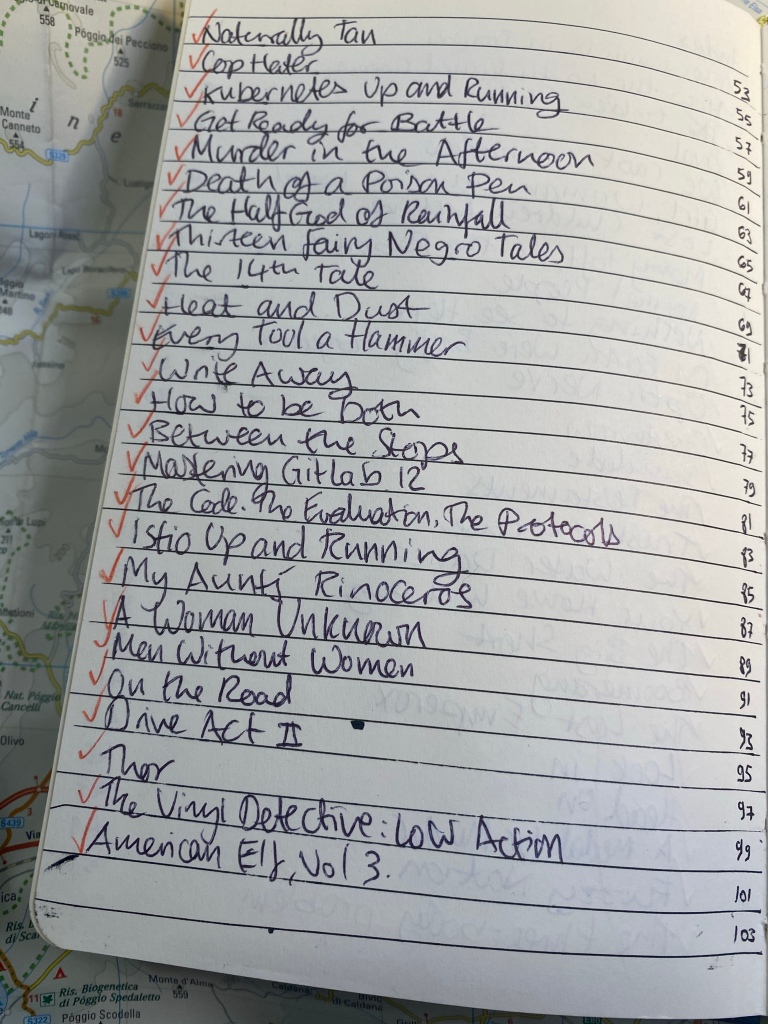
I missed a line on the second index page, so the index numbering came out a little wonky. It’s only for me, so I don’t mind.
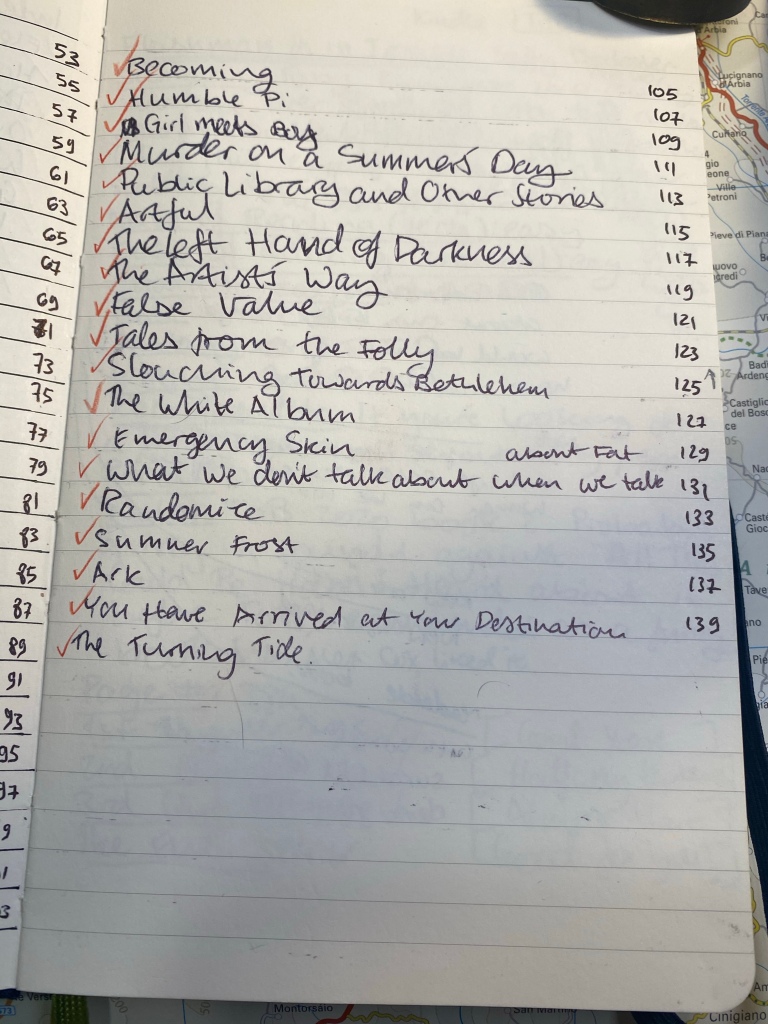
Here’s a sample of a complete page. I talked more about my thoughts behind the design in a previous post, but you can get the gist by looking at this sample. I like drawing something that captures the book for me on the opposite page, which is why I love the Moleskine Two-Go format.
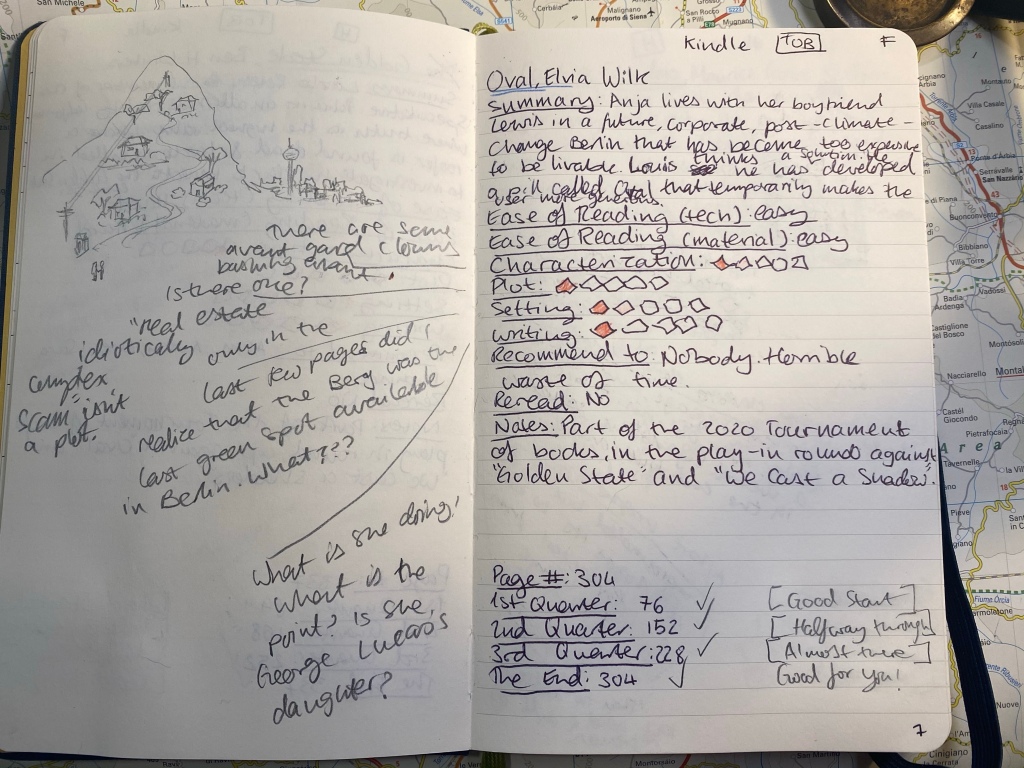
At the very last page of the journal I keep a log of how many books I read that month. It’s ten books so far for December, but the month isn’t done yet so that line isn’t filled.
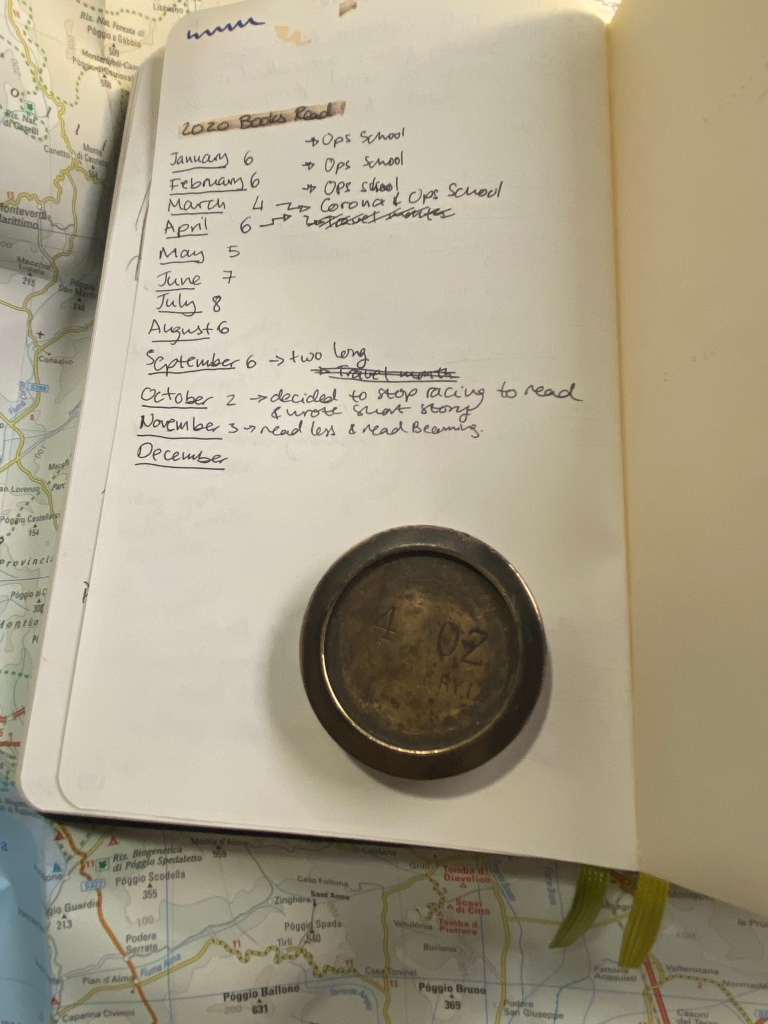
Here is my new reading journal, a Moleskine Two-Go, this time in green (my previous ones were in light grey, dark grey and navy):
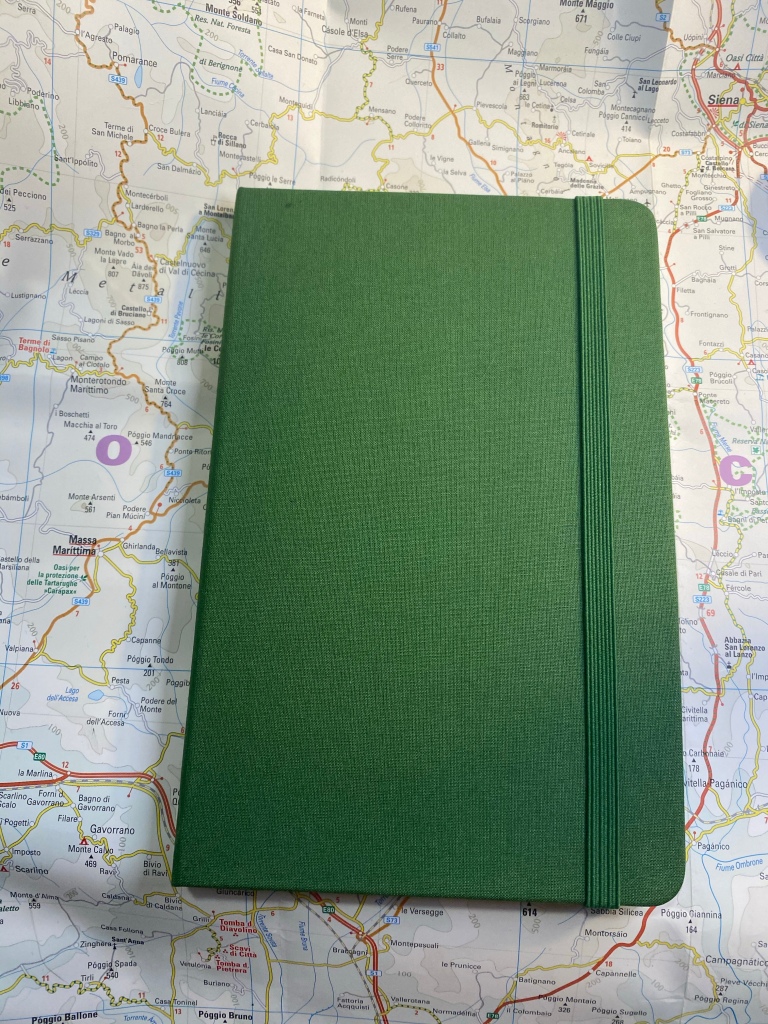
I love the texture of the fabric colours on this, and the shade of green is interesting. The two contrasting bookmarks and the endpapers are grey.
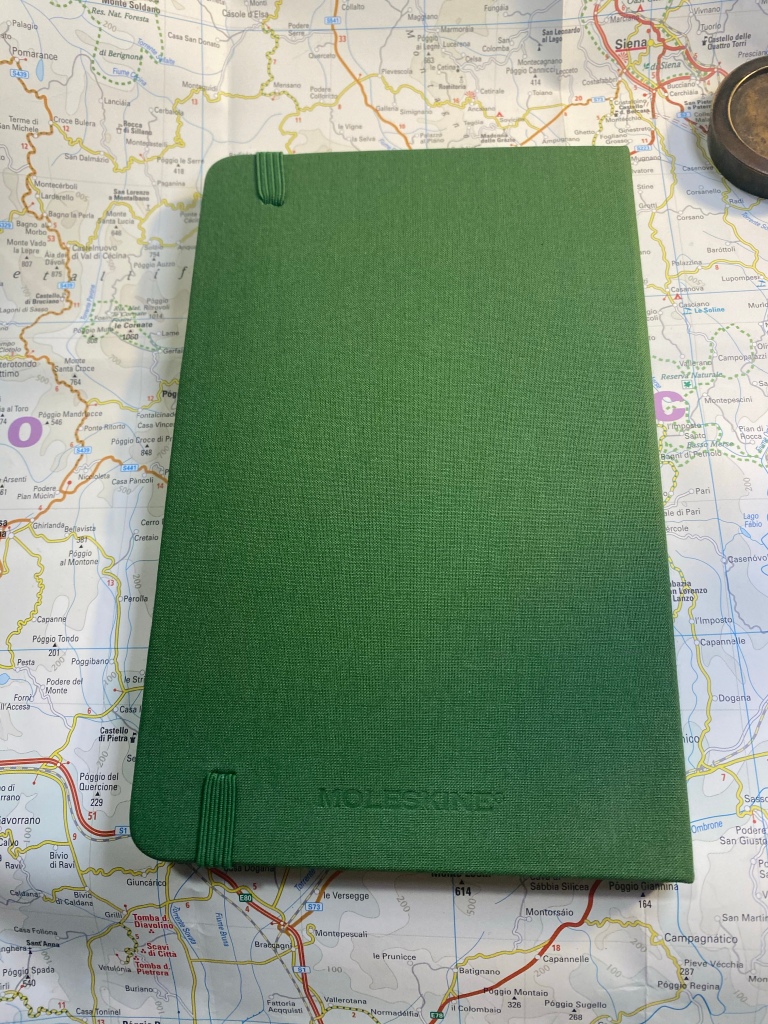
The first page, marking when I started the notebook and which journal number it is. This notebook doesn’t leave my desk yet I still write my name and email in case I misplace it somehow.
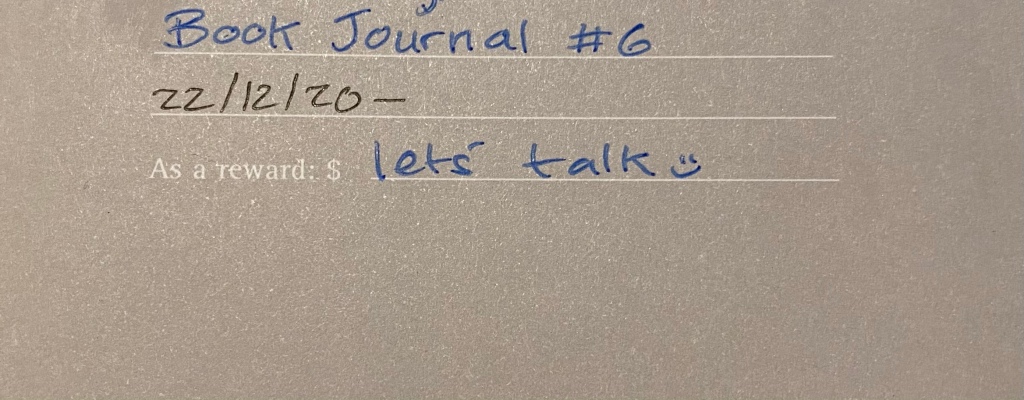
Next comes the index page. Since this is my third Two-Go reading journal I already know to number the pages until 139 (I number odd pages only, since my reviews are on odd pages), which comes out to 70 books.
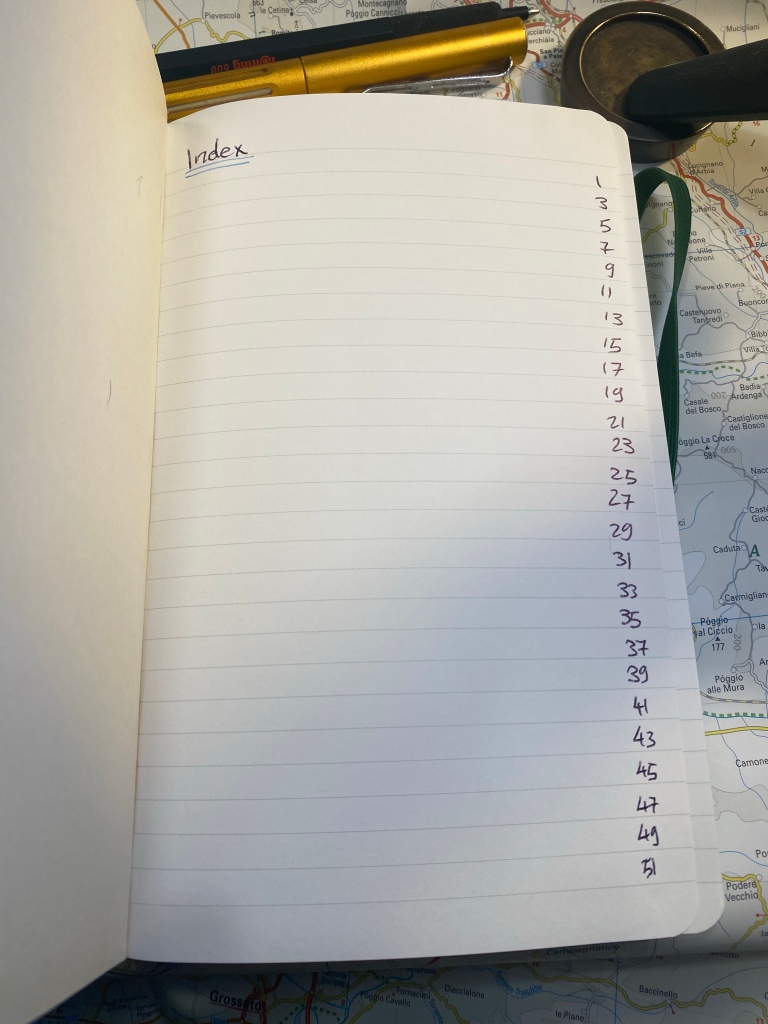
I rule the second page, because I tried just winging it on the first year and it didn’t come out great.
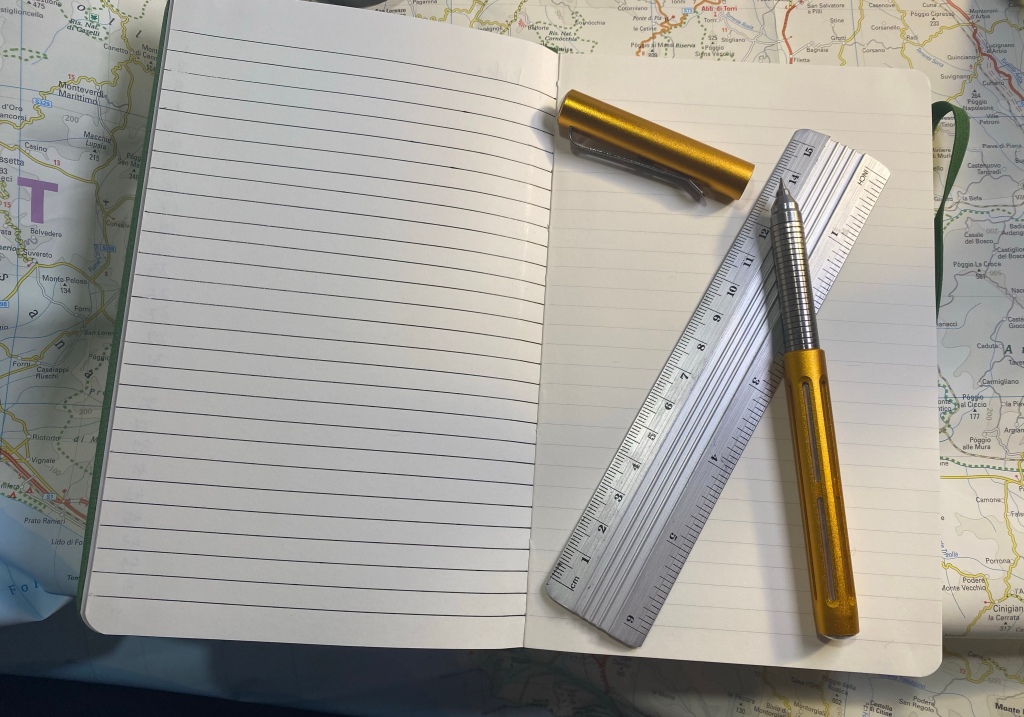
On the last page I create my books per month tracker:
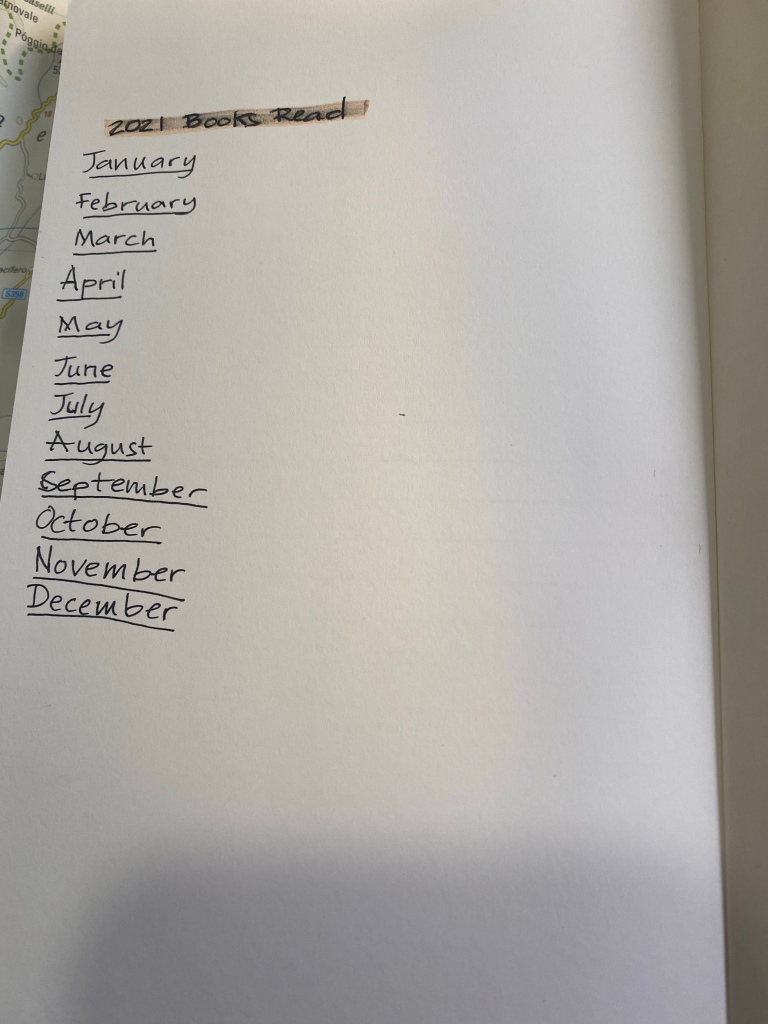
I number all the pages of the index, but only the first 25 pages of the actual book journal. I will continue numbering pages in batches as I add books to the journal. The great advantage of using a completely unstructured book here is that I can do whatever I want with it, including starting the numbering after the index pages and not on the first notebook page.
These are the pen and pencils that I’ll be using in this journal. The Rotring 600 is a ballpoint, and the only ballpoint that I regularly use. The Caran d’Ache Bicolor has been my companion in these notebooks for several years. I use it to highlight things, and sometimes in my book scene sketches. I used the Blackwing 611 in my previous reading journal, and this time I’ll be using the Blackwing 4.
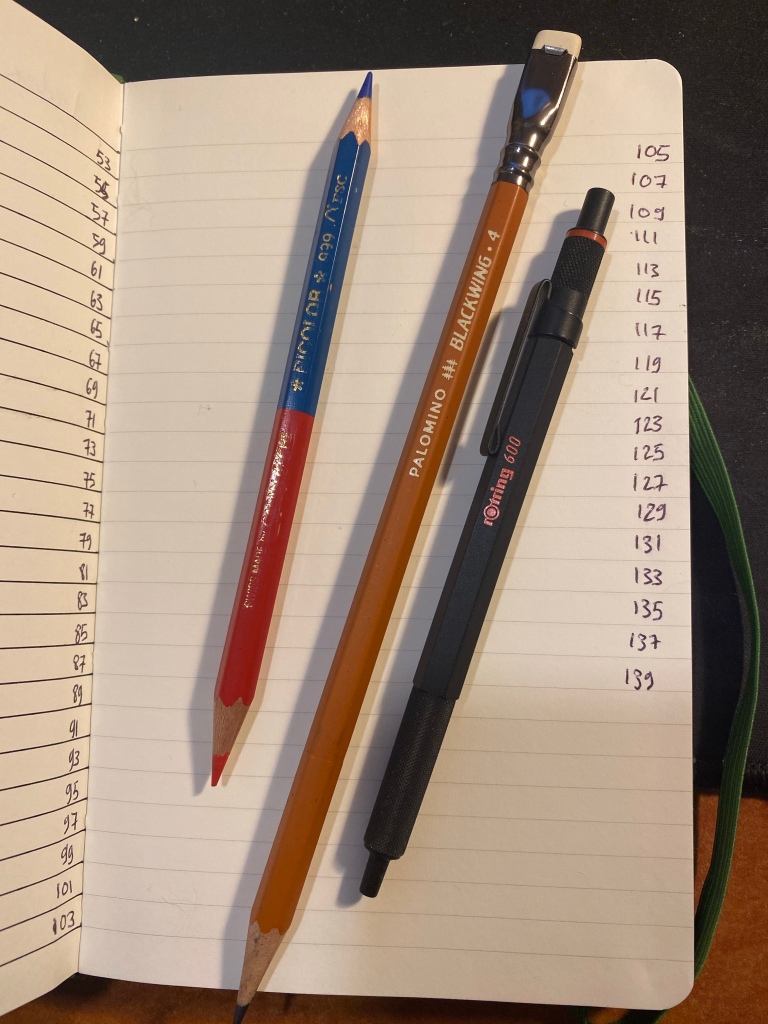
The first non fiction book in this journal:
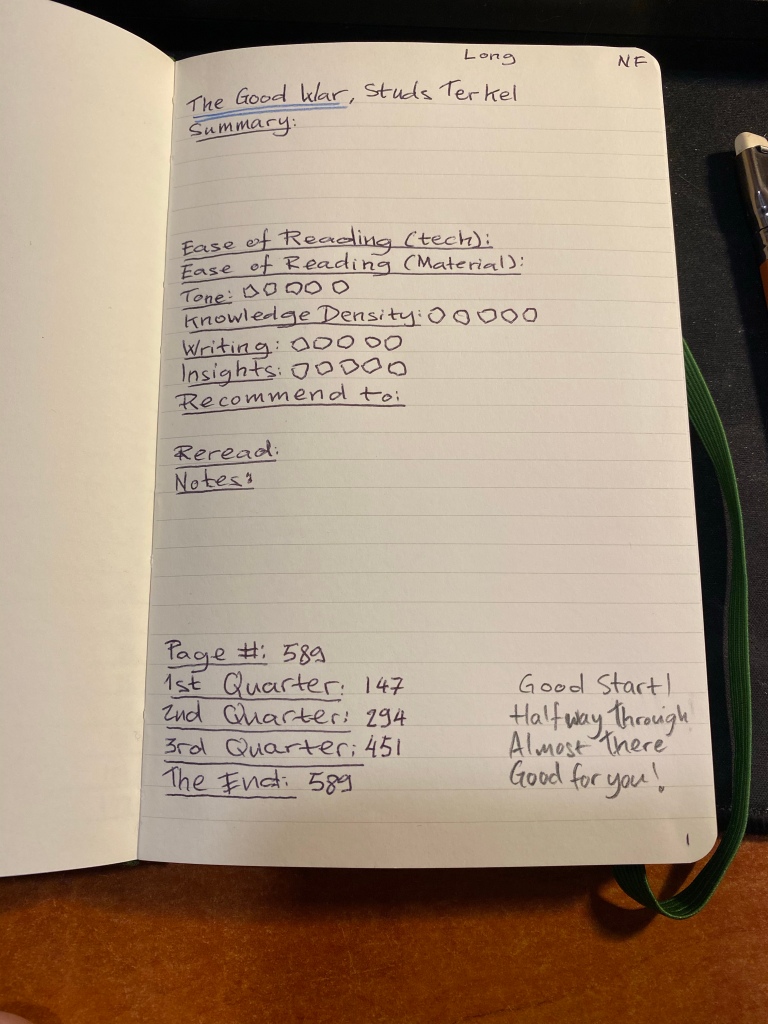
The first fiction book in this journal:
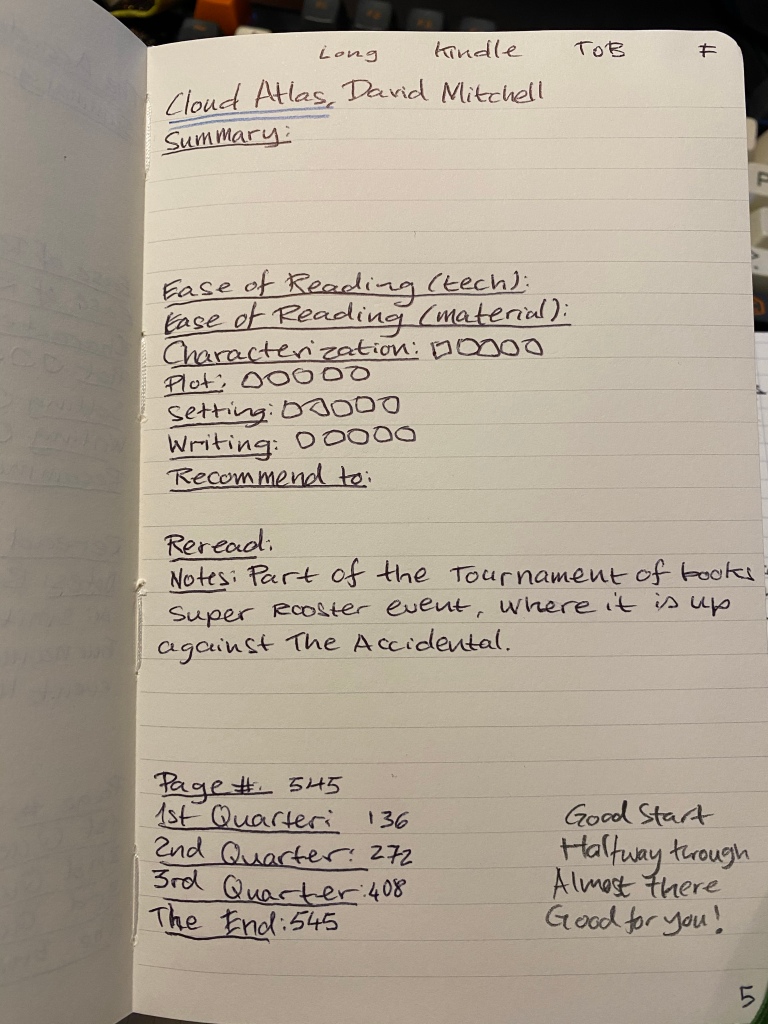
That’s my new reading journal all set up and ready to go. I hope that this inspires you to keep a reading journal of your own, one that will encourage you to read more and help evoke the memories of reading a specific book.

Galahad
It’s great to have one and be consistent.
I,ve been journaling for almost 8 years and I tried to follow a reading journal once but after 5 books I stopped and returned to write about what I read combined with everything else.
The last 3 months I turned my notebook into a bullet journal and so far the problem that I had with the collections that I use for books is that I have to thread a lot since I use the journal in a daily basis and I wanted to separate the book collection from the daily logs.
It’s nice to see that having a separate reading journal is something achievable, maybe I’ll use one notebook for that next year.
Nice post have a nice day.
LikeLiked by 1 person
writingatlarge
Thank you! I’d give a reading journal a try. It’s something that’s worth keeping if only to remind yourself of what you thought about what you read after you’ve read it. And 8 years of journaling is impressive. My journalling has ground to a halt once we starting going into lock downs here.
LikeLike
Galahad
What I did to overcome a blank page was write at least 5 things that I was grateful for during the day.
I felt like there wasn’t almost anything worth recording due to not having a lively routine as before but listing things that I was grateful for during the day proved me wrong.
Merry Christmas.
LikeLiked by 1 person
writingatlarge
What a great idea! Merry Christmas.
LikeLike
Pingback: 2020 Yearly Goals (New Year’s Resolutions) – Writing at Large
C Dyson
Hi
Thanks for this, I love seeing how other people do things. I am just completing my second year of logging what books I’m reading and I was fascinated to see how organised you are. I just index the titles at the beginning and then write about the book without any of your impressive checklists for character, easy of reading etc. I also love the glimpse into your reading – we share one book: Girl, Woman, Other, which I thought was a worthy – and readable – winner of the Booker Prize. I’ve just got my next notebook lined up – Paperchase had just launched a “personalise your notebook” app so I am very pleased to have a hardback notebook with “My Year of Reading 2021” printed on the front to begin tomorrow. Best wishes from one bibliophile to another.
LikeLiked by 1 person
Pingback: 2021 Yearly Goals (New Year’s Resolutions) and Theme – Writing at Large
Pingback: Moleskine Winter 2021 Catalog: A Tale of Discontinued Notebooks – Writing at Large
Pingback: Weekly Update: Winter Cats and Yayoi Kusama – Writing at Large
Pingback: On Reading and the Tournament of Books – Writing at Large